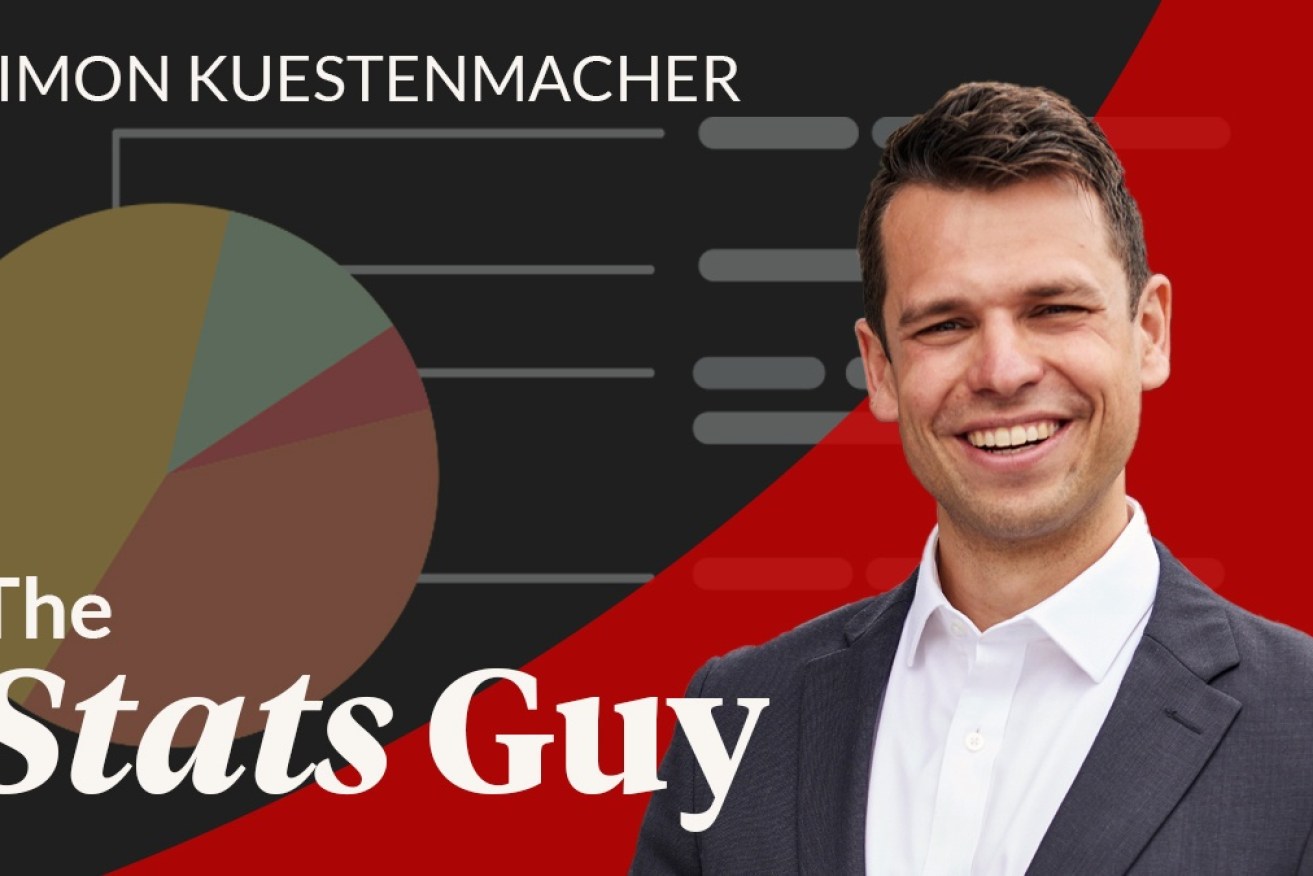The Stats Guy: How the pandemic shaped population patterns in our largest city


The Stats Guy Simon Kuestenmacher looks at what the Census tells us about your success on the dating market. Photo: TND
My recent column explored how Victorian population patterns changed during the first year of lockdowns.
Today we’ll be repeating this exercise for New South Wales.
The latest population data from the ABS allows us to analyse the population changes between June 2020 and June 2021. Although Melbourne had spent the best part of that period locked down, the big Sydney lockdown only started on June 25, 2021. From a data perspective, that’s wonderful. The population changes in Sydney follow a similar general pattern and allow the conclusion that certain trends are not simply a result of Melbourne’s strict lockdowns.
What are the big drivers at play here? Working from home, a lack of migrants and Millennials looking for family-sized homes.
The inner suburbs (less than five kilometres from the Central Business District) of Sydney lost 11,000 people in the first year of the pandemic.
That area usually grows at around 8000 people per year. International students and skilled migrants leaving the area was the main reason for the decline. The other reason is that many recent high school graduates continued living with their parents. Why bother moving from a regional town or suburbia to the inner-city during a pandemic?
Uni takes place online, life at home is cheaper and the inner-city party scene is low-key anyway. On top of this, we have seen young Millennial families leaving their 1-2-bedroom apartments in Surry Hills, Paddington, Darlington and Co behind as they look for homes that are large enough to fit kids and a zoom room (we stopped using the term study during the pandemic).
This hunt for family-sized homes drove Millennials to the urban fringe, a few growth pockets within the middle suburbs, and to regional NSW.
Overall, Sydney’s middle suburbs suffered population losses. The same cohorts that left the inner suburbs also left the middle suburbs. There are, however, some growth pockets in the radius five to 25 kilometres from the CBD.
East of Sutherland (towards Cronulla), we’ve seen decent growth, for example. So much so that Cronulla’s median house price rose by an unbelievable $1 million between 2019 and 2021 ($1.9M to $2.9M)!
Neighbouring Miranda saw price rises of half a million dollars ($1.1M to $1.6M). This particular growth pocket is most likely driven by upgraders and lifestylers seeking housing close to the beach rather than by first home buyers.
Young families have instead been settling in the ‘Western growth banana’. This is what I call the collection of outer suburbs reaching from Campbelltown (40+ km from the CBD) via Penrith (50km from the CBD) to Rouse Hill (35km from the CBD).
Sydney doesn’t have the family-friendly, inner-city apartment market of European cities. Millennials, therefore, must look for family-sized homes outside of their current inner-city suburbs. They can’t find housing in the middle suburbs because empty-nester Baby Boomers aren’t selling their family-sized homes yet. Boomers will only start downsizing at scale in the 2030s, when their declining health makes the family home a nuisance or even a physical hazard.
This means for many Millennials the Western growth banana was the only affordable place to go. Sure, house prices went up sharply there too, but they were still well below housing costs near the coast and inner city.
Campbelltown saw houses go from $540,000 in 2019 to $750,000 in 2021, while Penrith went from $615,000 to $800,000, and Rouse Hill went from $940,000 to $1.3M. Affordability in Sydney is a relative concept – even in the outer suburbs.
The Blue Mountains lost quite a lot of population. The local towns of Wentworth Falls and Katoomba are traditionally home to a lot of seasonal workers (often international), operating in hospitality and tourism businesses. With closed international (and even state) borders, there simply wasn’t enough work in the Blue Mountains and the temporary workers moved on.
The working-from-home factor
If you were hoping to snatch up discount housing in the Blue Mountains, you will be disappointed to learn that homes in Wentworth Falls went from $640,000 in 2019 to $940,000 in 2021. It’s the same story in Katoomba ($590,000 to $760,000). The number of house sales in both towns went up significantly. Lots of workers appear to have opted for scenic mountain homes over crammed townhouses – working from home made such choices an option and hint at the future unwillingness of workers to return to the office.
Extreme commuters drove growth in the Central Coast area. Although cumbersome, commuting to the city from the Central Coast is doable. Which brings us to a super quick summary of growth in regional NSW.
Overall, regional towns have fared well. Only the inland towns of Armidale, Muswellbrook and Lithgow saw population declines worth talking about. These towns are outside of the extreme commutable distance to the CBD. To grow population in these towns, local jobs need to be created as few people will move there and bring their inner-city jobs along.
The rest of regional NSW did really well. Newcastle did better than any other location. It’s a place to watch. As Australia doubles down on local manufacturing and military spending, Newcastle stands to benefit. In the long run, Newcastle’s planners and politicians should start planning for a doubling or tripling of its population base.
What does the coming decade hold for Sydney?
The trend of Millennials leaving the inner suburbs to move to the fringe will continue throughout the 2020s, even with COVID being well and truly in the review mirror. Only the first few members of Australia’s largest generation have reached the family-formation stage of the lifecycle yet. As noted above, Baby Boomers will continue to stay put for another 10 years or so before they begin downsizing. This means the middle suburbs won’t see much population growth as there isn’t going to be much land on the market in the next decade.
The inner suburbs will bounce back once migration returns at scale. This is starting to happen now. The softer (once again, a relative term) inner-Sydney rental market will tighten as international students continue to flow into the country. We will learn quickly if we added enough housing stock during the pandemic to prepare for the coming population surge (I fear we haven’t).
Even if the CBD loses in relative importance as hundreds of thousands of Sydneysiders work from home on any given day, the magnitude of population growth in Sydney (we will soon be back to +100,000 people per year) guarantees continued demand for offices in the inner-city and housing nearby.
To summarise this column in four words: Don’t bet against Sydney.









